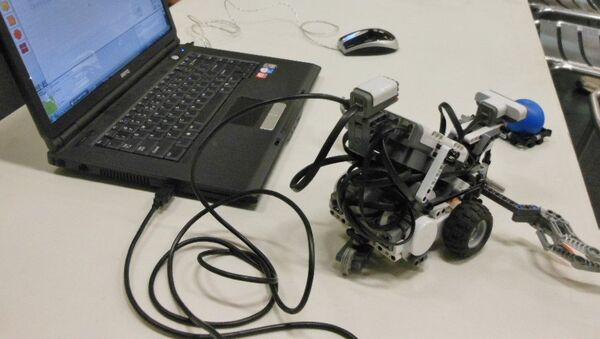It has been experimentally proven that the device recognizes the mental commands and converts them into data signals.
The current model created by the Astrakhan geniuses consists of a mobile wheeled platform that can be remotely controlled and a controller that receives the signals generated by the brain of the operator.
Interestingly, details for the device were designed by the boys and were printed on a 3D-printer. They also independently developed the necessary computer programs and mental and biomechanical command recognition algorithm.
“This project is not at a Nobel Prize level. Other developers are already trying to develop such control systems, but among children's projects this is still a rarity. To be precise, the control of the wheel mobile robot is carried out not by the thought process but by the activity of the brain of the operator,” Deputy Head of the Technopark of the Scientific and Technical School, Ilya Voevodin, said.
Daniel and Dmitry’s device operates on the principle of electroencephalography or neuro-interface. An electroencephalogram (EEG) is a test that detects electrical activity in your brain using small, flat metal discs (electrodes) attached to your scalp.
Based on this science, the children have added the ‘mind command’ as additional sensors that can read the signals.
This creation has multiple uses but is especially beneficial for people with disabilities.
Disabled people with impaired speech and failed motor functions, such as after a stroke or severe injuries can control a wheelchair or other equipment without pressing any buttons at all. This device can also be used for multi-tasking. With it, it will be possible to combine mental and manual control; one will simultaneously be able to handle different devices.
In military terms this device can help with enhancing combat. For example, the operator will be able to control several systems at the same time. He will be able to drive the military vehicle and shoot from different types of weapons simultaneously.



